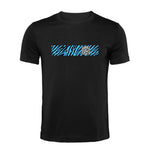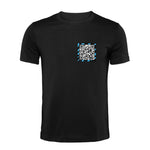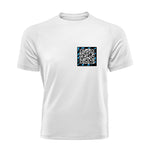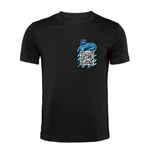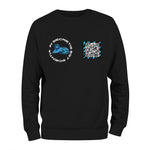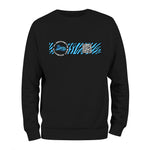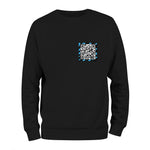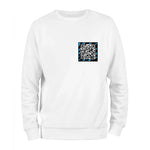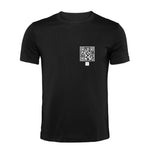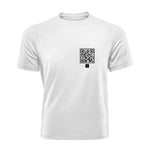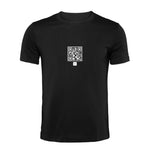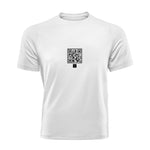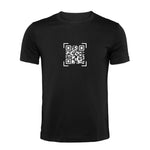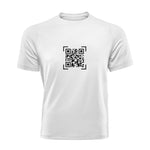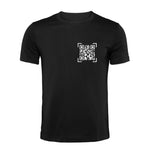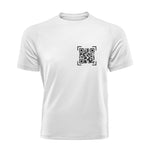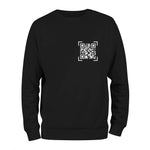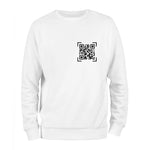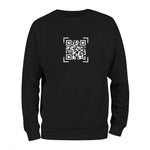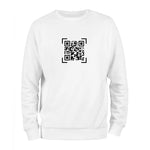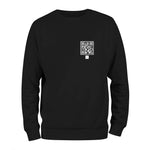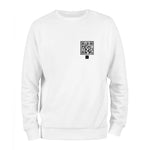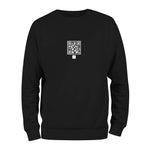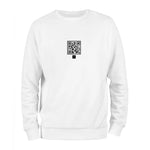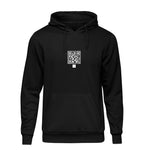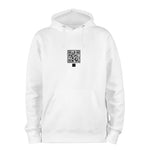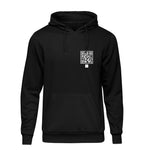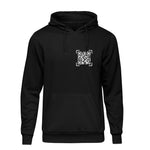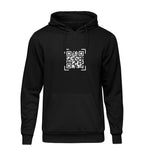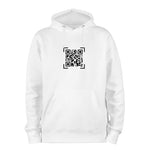Introduction
In the dynamic landscape of modern technology, Quick Response (QR) codes have emerged as ubiquitous black-and-white squares, bridging the physical and digital realms seamlessly. These pixelated patterns, initially developed in Japan during the 1990s, have evolved into an integral part of our daily lives, fostering efficient communication between the tangible world and the virtual one. This article delves into the fascinating intricacies of QR codes, unraveling the mysteries behind their creation, functionality, and the pivotal role they play in our interconnected society.

A. Brief Overview of QR Codes:
At first glance, QR codes may appear as mere jumbles of squares, but their underlying structure is a sophisticated matrix encoding information in a visually digestible format. QR, which stands for Quick Response, encapsulates the essence of these codes—they facilitate rapid data retrieval with a simple scan. Unlike traditional barcodes, QR codes store information both horizontally and vertically, enabling them to store significantly more data, ranging from web links and contact information to product details.
The design of a QR code is not arbitrary; it follows a standardized format, comprising black squares arranged on a white background. This unique arrangement serves a dual purpose: it enhances the code's readability for scanning devices while allowing for error correction, ensuring reliable information retrieval even in less-than-optimal conditions.
B. Importance and Ubiquity of QR Codes:
In recent years, QR codes have transcended their initial purpose as inventory tracking tools and have permeated diverse aspects of our lives. From contactless payments and event check-ins to restaurant menus and advertising, QR codes have become an integral part of the modern user experience. The COVID-19 pandemic further accelerated their adoption, as businesses and individuals sought touch-free solutions for transactions and information dissemination.
The ubiquity of QR codes lies in their versatility and convenience. With the prevalence of smartphones equipped with built-in cameras, anyone can effortlessly scan these codes, instantly unlocking a wealth of information or triggering specific actions. As businesses, educational institutions, and various industries embrace the efficiency of QR codes, understanding the inner workings of these enigmatic patterns becomes paramount.
As we embark on an exploration of the mechanics behind QR codes, we unravel the threads that connect the physical and digital worlds, illuminating the significance of these unassuming squares in our interconnected society. Join us on this journey to demystify the workings of QR codes and discover the pivotal role they play in shaping our modern technological landscape.

Part 2: What is a QR Code?
A. Definition and Origin:
Defining the QR Code: At its core, a QR code is a two-dimensional matrix barcode that stores information in a visually machine-readable format. The term "QR code" itself encapsulates its primary function: to provide a quick response by facilitating the swift retrieval of encoded data. Originally developed by Denso Wave, a subsidiary of Toyota, in 1994, the QR code was initially created to track automotive parts during manufacturing. Since then, it has transcended its industrial roots to become an indispensable tool in various fields, from marketing and logistics to healthcare and education.
Evolution of QR Codes: The evolution of QR codes is marked by their journey from industrial usage to widespread consumer adoption. Initially designed to streamline inventory processes, QR codes found their way into mainstream usage with the proliferation of smartphones. The integration of high-quality cameras in mobile devices turned every smartphone into a potential QR code scanner, unleashing a wave of possibilities for businesses and individuals alike.

B. Components of a QR Code:
1. Finder Patterns: QR codes feature square-shaped finder patterns located at three corners of the code, typically in the form of larger squares with smaller squares inside. These patterns help scanning devices locate and orient the QR code quickly.
2. Timing Patterns: Timing patterns consist of alternating black and white modules along the edges of the QR code. They aid in determining the size of the modules within the code, assisting scanners in decoding the information accurately.
3. Alignment Patterns: To further enhance accuracy during scanning, QR codes include alignment patterns, which are smaller squares strategically placed within the code. These patterns enable scanning devices to compensate for distortions that may occur during the scanning process.
4. Data Modules: The core of a QR code comprises data modules, the black and white squares that encode information. These modules are arranged based on a specific encoding algorithm, allowing the QR code to store various types of data, such as alphanumeric characters, numeric digits, binary data, or even Kanji characters.
5. Quiet Zone: Surrounding the QR code is a quiet zone, a margin of white space that ensures the code is distinct and easily distinguishable from its surroundings. The quiet zone minimizes the risk of misreading or misinterpreting the QR code during scanning.
Understanding the intricacies of these components provides insight into how QR codes function as efficient carriers of information. In the next section, we will explore the decoding process and the diverse applications that leverage the capabilities of QR codes. Join us as we continue to unravel the workings of these intriguing digital conduits.
Part 3: How do QR Codes Work?
A. QR Code Encoding Process:
1. Information Input: Before a QR code is created, the information to be encoded must be determined. This could range from a simple URL or text to more complex data such as contact information, Wi-Fi credentials, or even a combination of different data types.
2. Data Division: The chosen information is then divided into appropriate segments, with each segment assigned a specific data type. QR codes have the versatility to encode alphanumeric characters, numeric digits, binary data, and Kanji characters, allowing for a broad range of applications.
3. Error Correction: To enhance the reliability of data retrieval, QR codes incorporate error correction techniques. Error correction codes are added to the data, allowing the QR code to withstand damage or distortion. This is particularly crucial in scenarios where the code might be partially obscured or damaged, ensuring accurate decoding.
4. Encoding: The data, along with error correction codes, is encoded using a specific algorithm. The encoding process involves converting the information into a binary format and arranging it in a predetermined pattern of black-and-white modules. This pattern constitutes the QR code itself.
B. Decoding Mechanism Explained:
1. Scanning: The process of decoding a QR code begins with a user or a device scanning the code using a camera-equipped smartphone or a dedicated barcode scanner. The scanning device captures an image of the QR code, converting the visual information into a digital format.
2. Image Processing: Once the image is captured, the decoding software initiates a complex process of image processing. This involves identifying the finder patterns, timing patterns, and alignment patterns within the QR code, allowing the software to establish the code's orientation and size.
3. Data Extraction: With the QR code properly oriented, the decoding software proceeds to extract the encoded data from the arrangement of black-and-white modules. The data is then translated back into its original format, revealing the information stored within the code.
4. Error Correction: The error correction codes embedded in the QR code play a crucial role during the decoding process. In case of any discrepancies or damage to the code, the error correction mechanism helps the decoding software rectify and reconstruct the original data accurately.
5. Action Triggering: Once the data is successfully extracted, the decoding software triggers the intended action associated with the QR code. This could involve opening a website, displaying contact information, connecting to a Wi-Fi network, or executing any other predetermined function.
In conclusion, the seamless interaction between encoding and decoding processes enables QR codes to function as efficient conduits for information transfer. As we continue our exploration into the diverse applications and future prospects of QR codes, we unravel the layers of technology that make these black-and-white squares an integral part of our digital landscape. Join us in the next section as we delve into the real-world applications and the evolving role of QR codes in shaping our connected future.
Part 4: Applications of QR Codes
A. Marketing and Advertising:
Enhancing Consumer Engagement: QR codes have revolutionized marketing and advertising strategies, offering a direct and interactive link between physical and digital mediums. Businesses leverage QR codes on print materials, posters, and product packaging to seamlessly connect consumers with additional information, promotional content, or exclusive offers. By scanning a QR code, users can be redirected to product pages, promotional videos, or social media platforms, creating a dynamic and engaging marketing experience.
Campaign Tracking and Analytics: Marketers benefit from the trackability of QR codes. Each scan provides valuable data, including the location and time of the interaction. This data helps businesses analyze the effectiveness of their campaigns, allowing for real-time adjustments and optimization of marketing strategies.

B. Contactless Payments:
Efficient Transactions: QR codes have become a cornerstone in the evolution of contactless payments. Payment providers and merchants utilize QR codes to facilitate quick and secure transactions. Users can simply scan a merchant's QR code to initiate a payment or display their own QR code for receiving funds. This method eliminates the need for physical cash or card transactions, offering a convenient and hygienic payment solution.
Mobile Wallet Integration: Leading mobile payment platforms integrate QR code technology into their applications. Users store their payment information in a digital wallet and generate QR codes for transactions. This approach not only enhances security but also simplifies the payment process for both consumers and businesses.

C. Event Ticketing:
Streamlined Access: QR codes have transformed the event ticketing process, replacing traditional paper tickets with digital counterparts. Attendees receive QR codes via email or mobile apps, which serve as their electronic tickets. Scanning these QR codes at entry points provides a swift and contactless method for verifying ticket authenticity and managing large crowds efficiently.
Dynamic Ticketing Solutions: Dynamic QR codes add an extra layer of security to event ticketing. These codes can be updated in real-time, reducing the risk of counterfeit tickets. Additionally, event organizers can personalize QR codes to include attendee information, offering a seamless and secure admission process.

D. Inventory Management:
Efficient Tracking and Tracing: In the realm of logistics and inventory management, QR codes play a pivotal role in enhancing efficiency. Each product or package can be assigned a unique QR code, facilitating accurate tracking and tracing throughout the supply chain. This enables businesses to monitor inventory levels, streamline order fulfillment, and enhance overall operational transparency.
Reduced Errors and Improved Accuracy: QR codes significantly reduce the likelihood of errors associated with manual data entry. Scanning QR codes during various stages of the inventory management process minimizes human error, ensuring that products are accurately identified, recorded, and monitored.
As QR codes continue to permeate various industries, their applications diversify, demonstrating the adaptability and versatility of this technology. In the subsequent section, we will explore the evolving landscape of QR codes and glimpse into potential future developments that may further shape their role in our interconnected world. Join us as we envision the future of QR codes and their expanding influence on technology and daily life.

Part 5: Creating Your Own QR Code
A. Online QR Code Generators:
1. Simplicity and Accessibility: Creating your own QR code has never been easier, thanks to the proliferation of online QR code generators. These user-friendly tools offer a simple and accessible way for individuals and businesses to generate QR codes without the need for extensive technical expertise. Users can find a myriad of online platforms that provide free QR code generation services, allowing them to encode various types of information effortlessly.
2. Step-by-Step Process: Online QR code generators typically follow a straightforward process. Users input the desired information, whether it be a URL, text, contact details, or other data types. The generator then processes this information and produces a unique QR code that can be downloaded and utilized immediately.
3. Versatility in Output: Users can choose from different output formats, such as PNG, JPEG, or SVG, depending on their specific needs. This versatility ensures compatibility with various applications, whether it's embedding the QR code in digital content, printing it on marketing materials, or integrating it into a mobile app.
B. Customization Options:
1. Branding and Aesthetics: While QR codes inherently follow a standard black-and-white pattern for optimal scanning, many online generators provide customization options. Users can incorporate branding elements, such as logos or colors, into the QR code without compromising its functionality. This allows businesses to maintain a cohesive brand identity while utilizing QR codes for marketing purposes.
2. Error Correction Level: Customization extends beyond aesthetics to include practical considerations. Users can select the error correction level based on their preferences and use case. Higher error correction levels enhance the QR code's resilience to damage, making it more suitable for applications where the code may undergo wear and tear.
3. Size and Scaling: Adjusting the size of the QR code is crucial for its legibility and functionality. Online generators typically allow users to customize the size of the generated QR code, ensuring it is appropriately scaled for different applications. Whether it's a small business card or a large poster, customization options cater to diverse sizing requirements.
4. Dynamic QR Codes: For scenarios requiring real-time updates or changes, dynamic QR codes offer a solution. Unlike static QR codes, which contain fixed information, dynamic QR codes can be modified even after creation. This feature is particularly useful for applications like event management, where details may need to be updated on the fly.
Creating a QR code that aligns with your specific needs and preferences is a seamless process with the abundance of online tools. In the final section of our exploration, we will discuss the future prospects of QR codes, examining potential advancements and innovations that could further elevate their role in technology and daily life. Join us as we conclude our journey into the realm of QR codes and their evolving significance.
Part 6: Advancements in QR Code Technology
As QR codes continue to solidify their presence in various industries, ongoing technological advancements promise to further elevate their capabilities and applications. The evolution of QR code technology extends beyond itstraditional black-and-white matrix, introducing innovative features that enhance functionality, security, and user experience.
1. Color QR Codes:
While the classic black-and-white QR code remains a staple for optimal scanning, advancements in technology now allow for the introduction of color. Colorful QR codes not only offer enhanced aesthetics but also provide an opportunity for branding and customization. This evolution ensures that QR codes seamlessly integrate into the visual design of marketing materials without sacrificing scanability.
2. Enhanced Security with Encryption:
As QR codes become more integrated into sensitive transactions, such as mobile payments and secure document access, encryption technologies are being incorporated to enhance security. Encrypted QR codes add an extra layer of protection, ensuring that the information encoded is secure and resistant to unauthorized access or tampering.

3. Augmented Reality (AR) Integration:
The fusion of QR codes with augmented reality opens up new dimensions for interactive and immersive experiences. AR-enabled QR codes can trigger virtual overlays, 3D animations, or additional information when scanned, providing users with a dynamic and engaging interaction. This innovation finds applications in marketing, education, and entertainment.

4. Blockchain Integration for Authentication:
Blockchain technology is being explored to enhance the authenticity and traceability of QR codes. By integrating QR codes with blockchain, businesses can create secure and immutable records of transactions or product origins. This not only adds a layer of trust but also addresses issues related to counterfeiting and fraud.
5. Machine Learning for Advanced Recognition:
Advancements in machine learning algorithms contribute to the improvement of QR code recognition capabilities. These algorithms enable scanners to identify and decode QR codes even in challenging conditions, such as low light, partial obstruction, or distorted codes. This ensures a more robust and reliable scanning experience.
6. Integration with the Internet of Things (IoT):
QR codes are increasingly being integrated with the Internet of Things, allowing devices to communicate seamlessly. In IoT applications, QR codes serve as a bridge for devices to access relevant information or instructions. This integration enhances the efficiency of IoT ecosystems, particularly in areas like smart homes and industrial automation.
7. Biometric QR Codes:
The integration of biometric data, such as fingerprints or facial recognition, adds an extra layer of security to QR code interactions. Biometric QR codes enhance authentication processes, making them more resistant to unauthorized access and ensuring that the user's identity is verified before triggering specific actions.
As we stand at the cusp of these technological advancements, the trajectory of QR codes continues to evolve. Their journey from simple inventory tools to versatile and secure information carriers reflects the adaptability and resilience of this technology. In the concluding section, we will reflect on the broader implications of QR codes, their societal impact, and the potential avenues for future innovation. Join us as we wrap up our exploration of QR codes and their role in shaping the digital landscape.
Part 7: Dynamic QR Codes
1. Real-Time Updates:
One of the defining features of dynamic QR codes is their ability to receive real-time updates. Unlike static QR codes, which contain fixed information, dynamic codes allow for modifications even after creation. This feature proves invaluable in scenarios where the encoded data may change, such as event details, promotions, or contact information.
2. Enhanced Flexibility:
Dynamic QR codes provide enhanced flexibility in content management. Businesses and individuals can modify the linked content without the need to generate a new QR code. This not only streamlines the updating process but also ensures that users always access the latest and most relevant information.
3. Traceability and Analytics:
Dynamic QR codes facilitate comprehensive traceability and analytics. Every scan of a dynamic code is logged, providing insights into user interactions. Businesses can track the performance of their QR code-based campaigns, analyzing data such as scan location, time, and user demographics to refine marketing strategies.
4. Improved Security:
The dynamic nature of these codes contributes to improved security. In scenarios where sensitive information is involved, such as ticketing or authentication, the ability to change the code dynamically reduces the risk of unauthorized access. This enhances the overall security of the QR code system.
5. Customization Beyond Creation:
Dynamic QR codes offer ongoing customization options beyond the initial creation. Users can adjust settings, appearance, and functionality even after the code has been distributed. This adaptability is particularly beneficial for businesses that require flexibility in their marketing campaigns or for organizers managing dynamic event information.
6. Multi-Purpose Campaigns:
Businesses can run multi-purpose campaigns using a single dynamic QR code. Whether promoting different products, services, or time-limited offers, a dynamic QR code serves as a versatile tool that adapts to changing promotional needs. This versatility streamlines marketing efforts and allows for a cohesive and efficient campaign strategy.
7. Evolving Content:
Dynamic QR codes support evolving content strategies. For businesses with evolving product catalogs or changing promotional content, a single QR code can remain a consistent point of access while directing users to the latest and most relevant information. This ensures that marketing materials stay current without the need for constant code regeneration.
Dynamic QR codes exemplify the adaptability required in today's fast-paced and ever-changing digital landscape. Their ability to seamlessly integrate with evolving content, provide real-time updates, and offer enhanced traceability underscores their relevance in a variety of applications. As we conclude our exploration of QR codes, we recognize the enduring impact of dynamic QR codes on information dissemination, marketing strategies, and user engagement. Join us in reflecting on the broader implications of this technology and its continued evolution in the digital era.
Part 8: Challenges and Solutions
A. Misuse and Fraud:
1. Counterfeiting Concerns: As QR codes become more ingrained in daily activities, concerns regarding counterfeiting and fraudulent activities have surfaced. Malicious actors may generate fake QR codes to redirect users to phishing websites or to spread malware. In the realm of product authentication, counterfeit QR codes can lead to the distribution of fake goods.
2. Solutions:
- QR Code Verification Services: Implementing QR code verification services can help users and businesses confirm the authenticity of a code before scanning. These services use databases to validate whether a QR code is legitimate or has been reported as fraudulent.
- Secure QR Code Generators: Choosing reputable and secure QR code generators with built-in security features can reduce the risk of generating counterfeit codes. These generators often employ encryption techniques and adhere to security standards.
B. Improved Authentication Measures:
1. Risks of Unauthorized Access: Dynamic QR codes, especially those used in sensitive transactions or access control, may be susceptible to risks of unauthorized access. Without proper authentication measures, malicious entities could attempt to manipulate or intercept the QR code, compromising the integrity of the system.
2. Solutions:
- Biometric Authentication: Integrate biometric authentication, such as fingerprints or facial recognition, into QR code interactions. This adds an extra layer of security by ensuring that only authorized users can initiate or complete certain actions.
- Two-Factor Authentication (2FA): Implementing two-factor authentication can enhance security. In addition to scanning the QR code, users may need to provide a secondary form of authentication, such as a unique code sent to their mobile device, to validate their identity.
3. Education and Awareness:
- User Education: Educating users about potential risks and best practices when interacting with QR codes is crucial. This includes advising them to only scan codes from trusted sources, avoid clicking on suspicious links, and be cautious when entering sensitive information.
4. Blockchain Technology:
- Blockchain Integration: Consider integrating blockchain technology to enhance the authenticity and traceability of QR codes. Blockchain creates a decentralized and tamper-resistant ledger, reducing the risk of unauthorized alterations to the information encoded in QR codes.
Addressing challenges associated with QR code misuse and enhancing authentication measures is integral to maintaining the trust and security of this technology. As we navigate these considerations, the continual evolution of QR codes requires a collaborative effort from users, businesses, and technology providers to ensure a secure and seamless experience. In the concluding section, we will reflect on the enduring impact of QR codes and their trajectory in the ever-evolving landscape of technology and connectivity. Join us as we conclude our exploration of QR codes and their multifaceted role in our digital era.
Part 9: QR Codes in a Post-Pandemic World
A. Contact Tracing:
1. Public Health Imperative: The COVID-19 pandemic reshaped the way societies approach public health, and QR codes played a pivotal role in contact tracing efforts. Governments and businesses globally adopted QR codes as a means to digitally track and trace individuals who may have been exposed to the virus. By scanning QR codes at entry points or within establishments, individuals provided essential data for timely and efficient contact tracing.
2. Privacy Considerations: While QR codes for contact tracing proved effective in controlling the spread of the virus, privacy concerns emerged. Striking a balance between public health surveillance and individual privacy became a critical consideration. Solutions that anonymize data and adhere to stringent privacy protocols were essential in fostering public trust in contact tracing QR code systems.
B. Digital Menus and Services:
1. Restaurants and Hospitality Industry: QR codes revolutionized the dining experience, especially in the hospitality industry. Instead of traditional printed menus, many restaurants adopted QR code-based digital menus. Customers could simply scan a QR code at their table to access a digital menu on their smartphones, minimizing physical contact with printed materials and enhancing the overall dining experience.
2. Streamlined Services: Beyond menus, QR codes streamlined various services in the hospitality sector. From hotel check-ins to spa reservations, QR codes facilitated touchless interactions. Guests could seamlessly access information and services by scanning codes, reducing physical touchpoints, and contributing to a safer and more efficient guest experience.
3. Retail and Beyond: The use of QR codes extended beyond the hospitality sector. Retailers embraced QR codes for product information, promotions, and contactless payments. Additionally, QR codes found applications in museums, airports, and other public spaces, providing users with instant access to information and services without the need for physical interactions.
4. Sustainable Practices: The adoption of QR codes for digital menus and services aligns with sustainability goals. By minimizing the use of disposable printed materials, businesses contribute to environmental conservation. QR codes offer a sustainable solution that not only enhances efficiency but also reflects a commitment to eco-friendly practices.
As we transition into a post-pandemic world, the integration of QR codes into various facets of daily life continues to evolve. Their versatility and adaptability have positioned them as a transformative technology with enduring relevance. In the final section, we will reflect on the lasting impact of QR codes, their future trajectory, and the role they may play in the ever-evolving landscape of technology and connectivity. Join us as we conclude our exploration of QR codes and their multifaceted role in shaping our digital era.
Part 10: Future Prospects of QR Codes
A. Integration with Augmented Reality:
1. Enhanced Interactive Experiences: The future of QR codes envisions a seamless integration with augmented reality (AR), unlocking new dimensions of interactive experiences. AR-enabled QR codes have the potential to transform static codes into dynamic portals, triggering immersive overlays, 3D animations, or interactive content. This innovation extends applications in marketing, education, and entertainment, offering users a more engaging and enriched experience.
2. Bridging the Physical and Digital Worlds: Combining QR codes with AR technology creates a bridge between the physical and digital realms. Users can scan a QR code to unlock augmented reality content, providing a deeper layer of information or entertainment related to the physical object or environment. This integration holds promise for industries ranging from retail and tourism to education and art.
B. Innovations on the Horizon:
1. Advanced Data Encoding: Future QR codes may support even more advanced data encoding techniques, allowing for the storage and retrieval of larger volumes of information. This could open avenues for applications in fields such as healthcare, where patient records or medical information could be securely accessed via QR codes.
2. Internet of Things (IoT) Synergy: The synergy between QR codes and the Internet of Things (IoT) is anticipated to grow. QR codes may play a central role in facilitating communication between IoT devices, acting as a simple and effective means for users to interact with and control connected devices in their homes, workplaces, or other environments.
3. Blockchain-backed QR Codes: The integration of blockchain technology with QR codes is likely to become more prevalent. Blockchain-backed QR codes offer enhanced security, transparency, and tamper resistance. This is particularly relevant in applications where data integrity and authenticity are critical, such as supply chain management or authenticating high-value items.
4. Personalized QR Experiences: The future may bring about personalized QR code experiences tailored to individual preferences. Businesses and content creators could leverage data analytics and artificial intelligence to customize the content and interactions triggered by QR codes based on user behavior, demographics, and preferences.
5. Sustainability and Eco-Friendly Practices: The future of QR codes may see a heightened focus on sustainability. Efforts to reduce the environmental impact of QR codes may involve the development of eco-friendly materials for code generation and an increased emphasis on recycling and sustainable practices in the production and disposal of QR code-related materials.
As we look ahead, the trajectory of QR codes is marked by innovation, adaptability, and an expanding role in our interconnected world. The continuous evolution of this technology underscores its resilience and enduring relevance. QR codes, with their rich history and dynamic capabilities, are poised to play a pivotal role in shaping the future of technology and connectivity. Join us in embracing the possibilities and envisioning the transformative journey that lies ahead for QR codes.
Part 11: Case Studies
A. Successful QR Code Campaigns:
1. Starbucks: "Starbucks for Life" Campaign: Starbucks successfully leveraged QR codes in its "Starbucks for Life" campaign. Customers could earn game plays by making purchases, and each game piece featured a QR code that users scanned with the Starbucks mobile app. This interactive campaign not only increased customer engagement but also drove app downloads and loyalty program participation.
2. WeChat in China: WeChat, the Chinese multipurpose messaging, social media, and mobile payment app, integrated QR codes seamlessly into its platform. Users can connect with friends, make payments, and access services by scanning QR codes. This widespread adoption of QR codes in WeChat exemplifies their versatility in facilitating various interactions within a single application.
3. Amazon Go: Amazon Go, the cashier-less convenience store, employs QR codes in its innovative shopping experience. Customers use the Amazon Go app to scan a QR code upon entering the store. The app tracks the items they pick up, and they can simply exit the store without going through a traditional checkout process. QR codes contribute to the frictionless and efficient nature of the Amazon Go shopping experience.
B. Noteworthy Failures and Lessons Learned:
1. QR Code on the U.S. Military's COVID-19 Vaccination Cards: The U.S. military faced challenges when incorporating QR codes on COVID-19 vaccination cards. While the intention was to facilitate quick verification of vaccination status, inconsistencies in the design and implementation of the QR codes led to interoperability issues. This case underscores the importance of standardized practices and clear communication in QR code deployments.
2. Lack of User Education: Several QR code campaigns have faced setbacks due to a lack of user education. If users are unfamiliar with the purpose or safety of QR codes, they may be hesitant to scan them. Successful campaigns involve educating users on the benefits and safety of scanning QR codes, fostering trust, and encouraging widespread adoption.
3. Poorly Implemented Mobile Payment QR Codes: Some mobile payment platforms experienced failures in QR code implementation, leading to security vulnerabilities and financial risks. Lessons learned from such failures emphasize the importance of rigorous testing, encryption, and security measures when integrating QR codes into systems that involve sensitive financial transactions.
As we examine both successful and less-than-successful instances, it becomes evident that the effectiveness of QR code campaigns relies on factors such as user engagement, proper implementation, and adherence to security standards. While successes highlight the potential for innovation and user interaction, failures underscore the importance of careful planning, user education, and robust technical implementation in QR code initiatives. These case studies provide valuable insights for businesses and organizations considering the integration of QR codes into their strategies. In the concluding section, we will reflect on the overarching impact of QR codes, their role in the digital ecosystem, and their enduring relevance in our interconnected world.
Part 12: QR Codes and Sustainability
A. Environmental Impact Considerations:
1. Paper and Printing Practices: The widespread use of QR codes, particularly in printed materials, raises environmental considerations related to paper and printing practices. Traditional printing methods, especially those involving disposable materials, contribute to deforestation and increased waste. Businesses and individuals utilizing QR codes in print materials are urged to adopt sustainable printing practices, including the use of recycled paper and environmentally friendly inks.
2. End-of-Life Management: As QR codes become integral to product packaging and marketing materials, the end-of-life management of these materials is a critical consideration. The disposal and recycling of printed materials with QR codes should align with eco-friendly practices. Encouraging users to recycle or dispose of materials responsibly minimizes the environmental impact of QR code usage.
B. Green QR Code Initiatives:
1. Eco-Friendly Materials: To address concerns about the environmental impact of QR codes, there is a growing emphasis on the use of eco-friendly materials for code generation. Sustainable QR code initiatives involve the exploration of materials that are biodegradable, recyclable, or derived from renewable resources. This shift towards eco-friendly materials aligns with broader sustainability goals.
2. Digital-First Approach: Promoting a digital-first approach mitigates the need for excessive printed materials containing QR codes. Encouraging users to scan digital QR codes from screens or digital displays reduces the reliance on physical printed materials. This approach not only enhances convenience but also aligns with sustainable practices by minimizing paper usage.
3. QR Codes in Sustainable Packaging: Brands are incorporating QR codes into sustainable packaging initiatives. By providing QR codes that link to information about the eco-friendly features of the packaging or instructions for responsible disposal, companies contribute to raising awareness and fostering environmentally conscious consumer behavior.
4. Carbon Footprint Reduction: Some QR code initiatives focus on reducing the carbon footprint associated with code generation and scanning. This involves optimizing the encoding and decoding processes to minimize energy consumption. Additionally, encouraging users to adopt energy-efficient devices for scanning contributes to the overall sustainability of QR code usage.
As QR codes continue to permeate various aspects of our lives, addressing their environmental impact becomes essential. Sustainable QR code initiatives strive to balance the convenience and functionality of QR codes with responsible environmental practices. By incorporating eco-friendly materials, promoting a digital-first approach, and integrating QR codes into sustainable packaging, businesses and individuals can contribute to a more environmentally conscious use of this technology. In the final section, we will reflect on the broader implications of QR codes, their role in shaping connectivity and information access, and the enduring significance of this versatile technology.
Part 13: User-friendly QR Code Apps
A. Top Picks for QR Code Scanning Apps:
1. ZBar Bar Code Scanner (Android, iOS):
- Platform: Android, iOS
- Key Features: ZBar is an open-source QR code scanner that supports various barcode formats. It is lightweight, fast, and offers a simple user interface, making it a reliable choice for quick and efficient scanning.
2. QR Code Reader by Scan, Inc. (Android, iOS):
- Platform: Android, iOS
- Key Features: This app provides a user-friendly experience with a clean interface. It supports scanning QR codes and barcodes and offers additional features such as creating QR codes, saving scan history, and sharing scanned content.
3. Bar-Code Reader (iOS):
- Platform: iOS
- Key Features: Bar-Code Reader is a straightforward and efficient QR code scanner for iOS devices. It supports various barcode formats and provides quick access to scanned content. Users appreciate its simplicity and ease of use.
4. Google Lens (Android, iOS):
- Platform: Android, iOS
- Key Features: Google Lens is a versatile tool that goes beyond QR code scanning. It uses image recognition technology to provide information about objects, landmarks, and more. Its seamless integration with Google's ecosystem enhances its capabilities.
5. Kaspersky's QR Scanner (Android, iOS):
- Platform: Android, iOS
- Key Features: Kaspersky's QR Scanner not only scans QR codes but also checks the safety of the scanned links. It includes features for blocking malicious content, providing an additional layer of security for users concerned about online threats.
B. Features to Look for:
1. Ease of Use:
- Look for apps with an intuitive and user-friendly interface. The scanning process should be straightforward, allowing users to quickly and easily capture QR codes without unnecessary complications.
2. Compatibility:
- Ensure that the app is compatible with your device's operating system (Android or iOS). Some apps may offer cross-platform support, allowing users to seamlessly transition between different devices.
3. Additional Functionality:
- Choose apps that offer additional features, such as the ability to create QR codes, save scan history, or share scanned content. These features can enhance the overall utility of the app.
4. Speed and Accuracy:
- A good QR code scanning app should provide fast and accurate results. Look for apps that efficiently recognize QR codes in various conditions, including different lighting and code sizes.
5. Security Features:
- For users concerned about online security, consider apps that include security features. Some apps have built-in mechanisms to check the safety of scanned links and protect users from potential threats.
6. Offline Capabilities:
- Apps with offline capabilities allow users to scan QR codes even without an internet connection. This can be particularly useful in situations where connectivity is limited.
Choosing the right QR code scanning app can significantly impact the user experience. Whether you prioritize simplicity, additional features, or security, exploring the diverse options available can help you find an app that aligns with your preferences and needs. In the final section, we will reflect on the broader implications of QR codes, their influence on connectivity and information dissemination, and their enduring relevance in the digital landscape.
Part 14: QR Codes in Education
A. Integrating QR Codes in Learning:
1. Interactive Learning Resources:
- QR codes serve as gateways to a plethora of interactive learning resources. Educators can embed QR codes in textbooks, worksheets, or online materials, providing students with direct access to supplementary videos, quizzes, or detailed explanations. This enhances the learning experience by catering to diverse learning styles.
2. Digital Assignments and Submissions:
- In the digital age, QR codes streamline the assignment process. Educators can create QR codes for assignment details or prompts, and students can use their smartphones to access and submit their work. This digital approach promotes efficiency and reduces the need for physical paperwork.
3. Virtual Field Trips:
- QR codes facilitate virtual field trips by linking students to online resources, virtual tours, or multimedia presentations related to the subject matter. This enables educators to enhance the curriculum by providing immersive experiences, even when physical field trips may be impractical.
B. Classroom Applications:
1. Attendance Tracking:
- QR codes simplify attendance tracking. Each student can have a unique QR code linked to their profile. By scanning the codes upon entering the classroom, educators can efficiently record attendance, saving valuable instructional time.
2. Interactive Whiteboards:
- Educators can use QR codes on interactive whiteboards to engage students in real-time activities. For example, a QR code can lead to a quiz or interactive game, turning the whiteboard into a dynamic learning tool that promotes student participation.
3. Instant Access to Learning Materials:
- Instead of distributing physical handouts, educators can provide students with QR codes that lead to online materials, articles, or digital textbooks. This approach ensures that students have instant access to the latest and most relevant information.
4. Parent-Teacher Communication:
- QR codes simplify communication between educators and parents. By including QR codes in newsletters or communications, parents can quickly access additional information about upcoming events, curriculum updates, or resources to support their child's learning.
5. Multilingual Support:
- QR codes can be employed to provide multilingual support. By linking to audio or video content with explanations in different languages, educators can support students who are learning in a language that is not their first language.
QR codes in education offer a versatile and efficient means of integrating technology into the learning environment. From interactive resources to streamlining administrative tasks, the applications are diverse and contribute to a more dynamic and engaging educational experience. As we explore the various applications of QR codes, it becomes evident that their adaptability extends to virtually every sector, making them a valuable tool in our interconnected world. In the concluding section, we will reflect on the broader implications of QR codes, their influence on connectivity, and their enduring significance in the digital landscape.
Conclusion: Embracing the QR Code Revolution
The evolution of QR code technology has been nothing short of revolutionary, transforming the way we access information, engage with content, and navigate the digital landscape. As we reflect on the multifaceted journey through the various aspects of QR codes, it is evident that this unassuming matrix of black squares has become an integral part of our daily lives, influencing industries, education, and connectivity in profound ways.
Recap of Key Points:
- Versatility and Ubiquity: QR codes have transcended their origin as inventory tools and become ubiquitous in diverse applications, from marketing and payments to education and healthcare.
- Components and Encoding: Understanding the components and encoding process of QR codes unveils the intricacies behind their functionality, showcasing the balance between simplicity and complexity.
- Dynamic QR Codes: The advent of dynamic QR codes has elevated their utility, allowing real-time updates, enhanced flexibility, and improved security.
- Advancements and Future Prospects: From the integration of augmented reality to innovations like color QR codes and blockchain-backed authentication, the future of QR codes promises continued advancements and exciting possibilities.
- Challenges and Solutions: Addressing challenges such as misuse and fraud requires robust solutions, including QR code verification services, biometric authentication, and increased user education.
- Sustainability: As QR codes continue to permeate our physical and digital spaces, sustainability initiatives, such as the use of eco-friendly materials and a digital-first approach, play a crucial role in minimizing their environmental impact.
- User-Friendly Apps: The availability of user-friendly QR code scanning apps enhances the overall experience, with top picks offering ease of use, compatibility, additional functionality, and security features.
- QR Codes in Education: In the educational realm, QR codes have transformed traditional practices, facilitating interactive learning resources, virtual field trips, and streamlined administrative tasks.
Embracing the Excitement:
As we stand on the cusp of the QR code revolution, the excitement lies in the continuous innovation and integration of this technology into our ever-evolving digital ecosystem. QR codes have proven to be more than just a passing trend—they have become a dynamic force shaping the way we connect, learn, and access information.
From the bustling world of commerce to the interactive landscapes of education, QR codes have demonstrated their adaptability and resilience. As we witness the integration of QR codes in areas we might not have imagined, the future holds boundless possibilities. The journey of QR codes is a testament to the transformative power of technology, and we eagerly anticipate the next chapters in their story.
So, whether you're scanning a QR code to make a contactless payment, exploring a virtual field trip in a classroom, or discovering the latest innovation, let's continue to embrace the QR code revolution—one square at a time. The exciting journey of QR code technology is far from over, and the best is yet to come.



